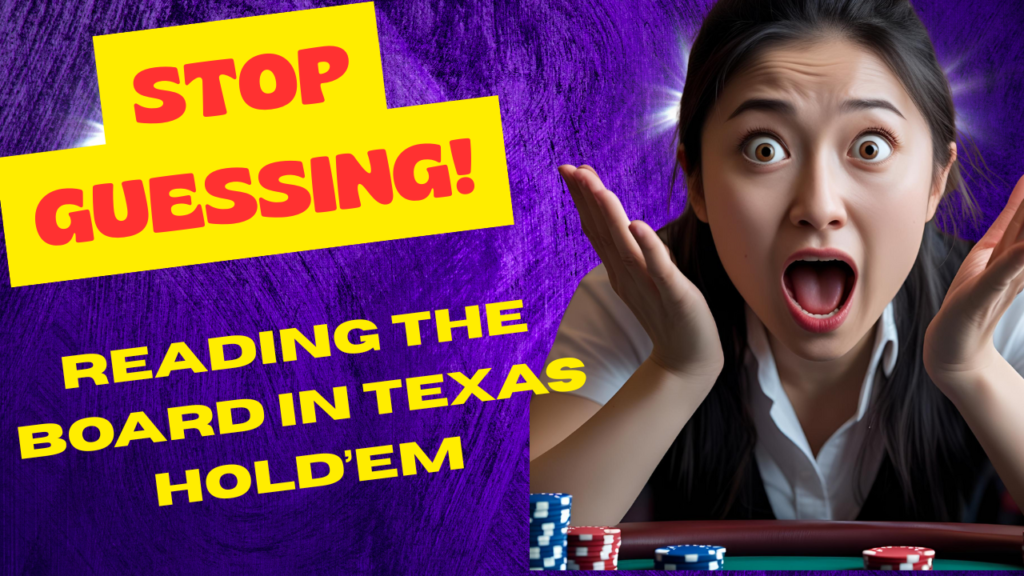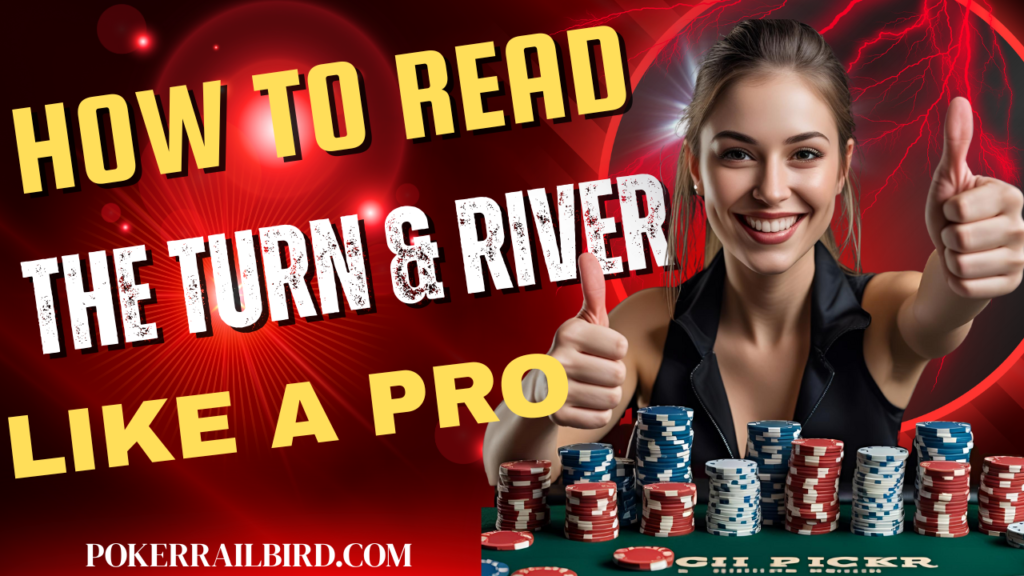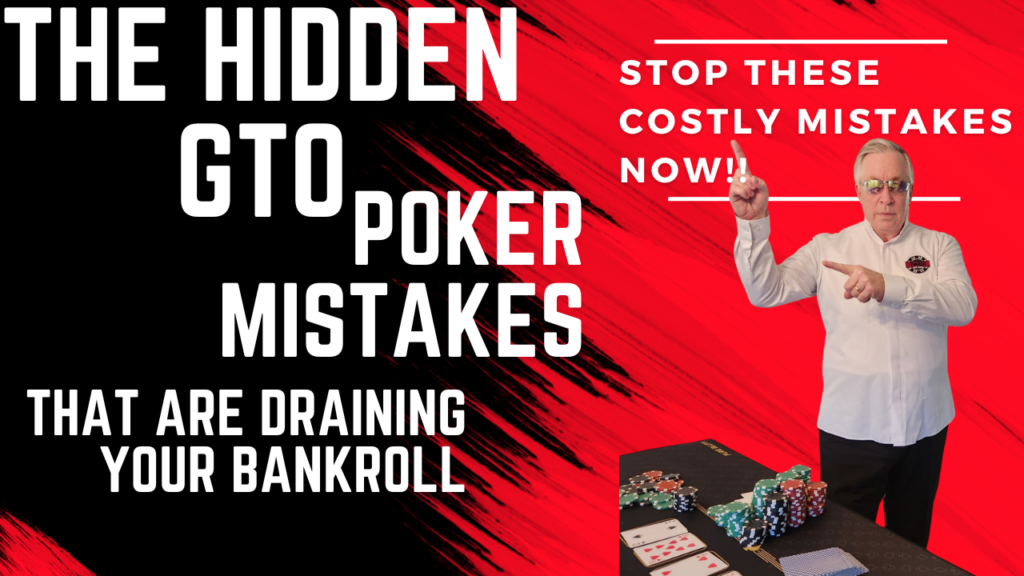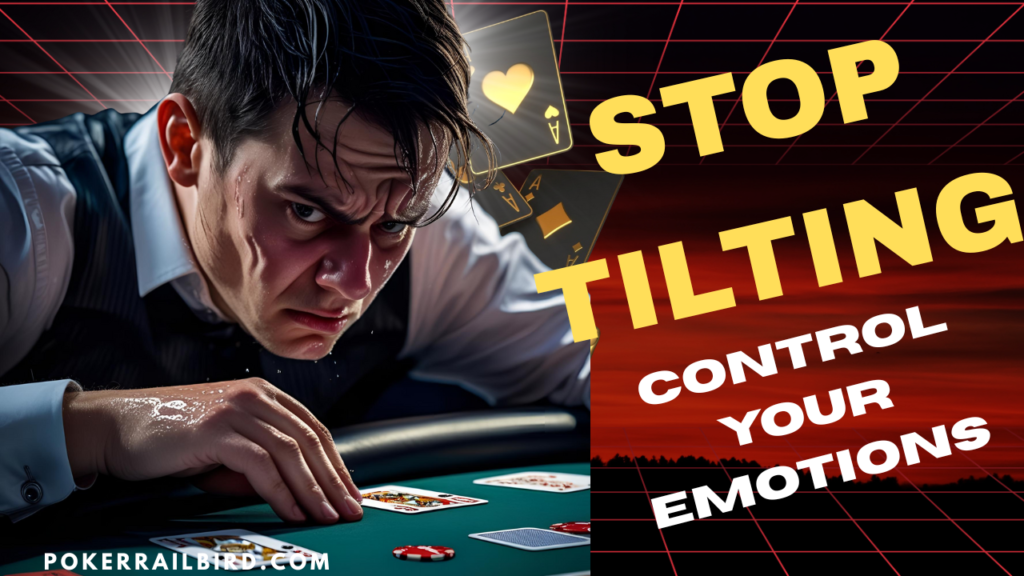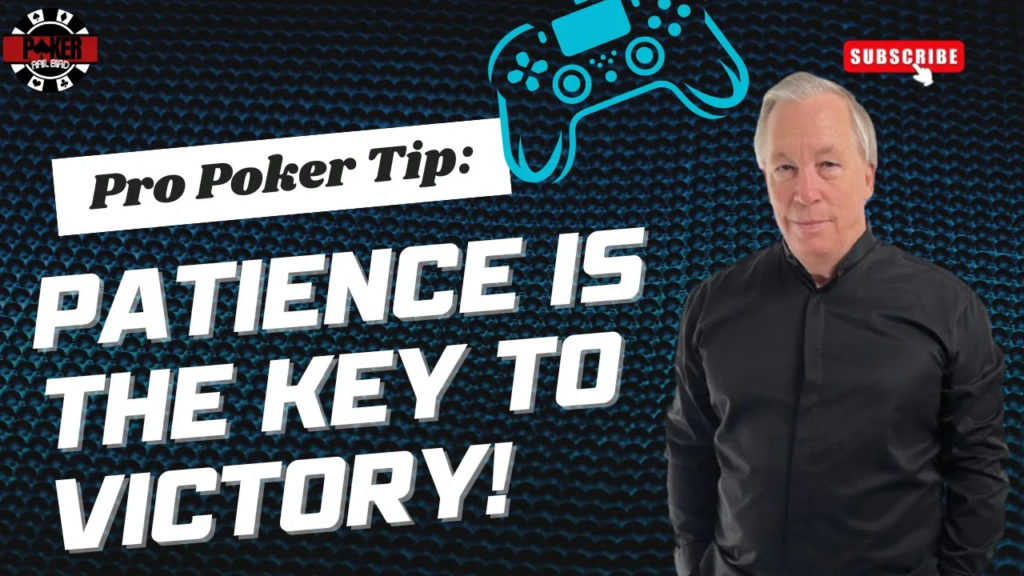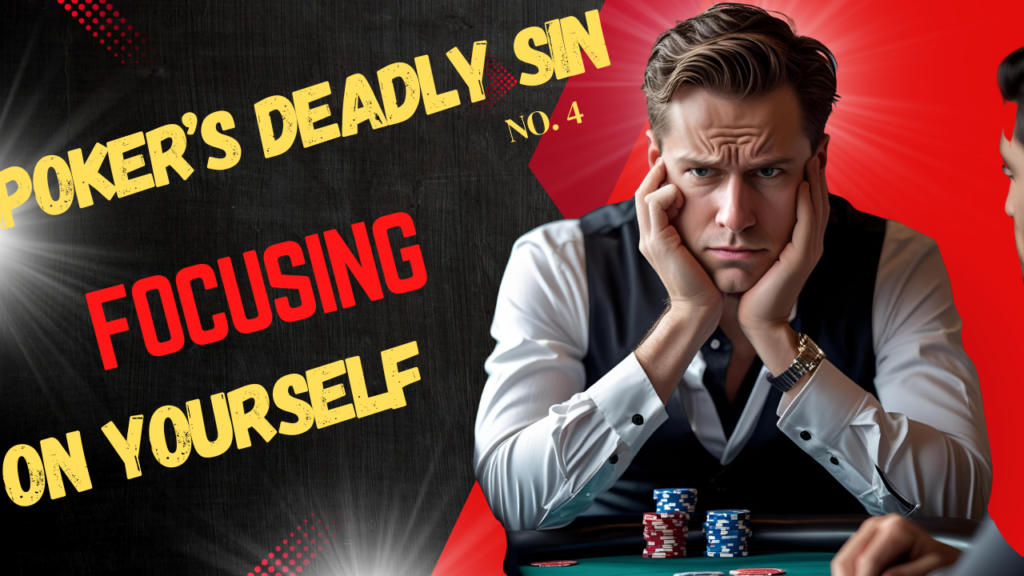Poker Tools – Not Rules
Home » Poker Tools – Not Rules
HOW MANY TIMES HAVE YOU LOST A HAND BY FOLLOWING THE 'RULES' TOO CLOSELY?
At Pokerrailbird.com, we champion the philosophy of Poker Tools, Not Rules. This mindset challenges the belief that poker is governed by rigid, one-size-fits-all rules. You’ve probably heard them all: Never limp into a pot, Always raise three times the big blind, Only play certain hands from specific positions. But are these “rules” helping your game, or holding you back?
Poker isn’t a game of fixed formulas—it’s a dynamic, ever-evolving contest of skill, psychology, and adaptability. While strategies like Game Theory Optimal (GTO) and starting hand charts offer valuable guidance, treating them as unbreakable rules can lead to predictable and exploitable play. The best players thrive because they know when to use these tools—and when to toss the “rulebook” aside.
In this article, we’ll explore why strict adherence to poker rules can limit your growth and how adopting a Poker Tools, Not Rules mindset will help you navigate the complexities of Texas Hold’em. You’ll learn how to adapt your strategy based on table dynamics, exploit opponent tendencies, and make mathematically sound decisions without falling into the trap of rigid thinking.
Let’s dive in and discover why poker success isn’t about following rules—it’s about mastering the tools that help you win.
THE PROBLEM WITH RIGID POKER RULES
You’ve probably encountered plenty of “golden rules” in your poker journey: Never limp into a pot, Always raise three times the big blind, Only play premium hands from early position. While these guidelines offer a baseline for beginners, rigidly following them can actually hinder your progress as you develop your game.

POKER IS A SITUATIONAL GAME
Poker Tools, Not Rules is about understanding that poker is a situational game. No two hands, players, or tables are ever the same. Applying the same strategy in every scenario leads to predictability, and in poker, predictability is your enemy. Skilled opponents will quickly pick up on patterns and exploit them, turning your “rule-following” into a liability.
THE CONSEQUENCES OF RIGID RULE-FOLLOWING
IGNORING THE HUMAN ELEMENT
But the consequences of rigidly following poker rules go beyond just being predictable—they can lead to strategically disastrous decisions. Take, for example, the common rule: Always raise three times the big blind if you plan to enter the pot. Imagine you’re on the button with pocket twos, and it has checked around to you with five players limping in. The only player left to act after you is the big blind. According to the “rule,” you should raise 3x the big blind. But does that make sense here? We’ll answer that question later in this article.
The problem with these so-called “rules” is that they ignore the human element in poker. Every player brings unique tendencies, emotions, and behaviors to the table. A strategy that works against a tight, conservative player might fail miserably against an aggressive bluffer. Poker success lies in your ability to adapt to these changing dynamics, not in rigid adherence to pre-set rules.
In the following sections, we’ll show you how to use poker tools like math, psychology, and observation to make smarter decisions—decisions that go beyond the outdated “rules” you’ve been told to follow.
TOOLS THAT ENPOWER, NOT RESTRICT
Rigid rules can only take you so far. To truly excel in poker, you need to master the tools that allow you to adapt to any situation at the table. The right combination of poker math, psychology, and tells will help you make better decisions, outthink your opponents, and stay ahead of the game.
POKER MATH: THE FOUNDATION OF STRATEGIC PLAY
Poker is a game of numbers, and understanding poker math is essential for making informed decisions. Key concepts include:
EXPECTED VALUE (ev)
FOLD EQUITY
POT ODDS
IMPLIED ODDS
This is the cornerstone of poker math. EV helps you determine whether a particular play will be profitable in the long run. Positive EV means you’re making money over time, while negative EV means you’re losing.
The additional value you gain when your opponent folds to your bet. Understanding fold equity allows you to recognize when aggression can force opponents out of the pot, even if you don’t have the best hand.
The ratio between the size of the pot and the size of the bet you need to call. Knowing pot odds helps you decide whether it’s mathematically correct to call, fold, or raise.
Unlike pot odds, implied odds consider the future bets you could win if you hit your draw. This helps you evaluate whether calling now could lead to bigger payouts later.
HAND PROBABILITIES
COMBINATORICS
HAND RANGES
The likelihood of hitting certain hands or improving your hand on the flop, turn, or river. For example, knowing the odds of completing a flush draw helps you make better calls.
This involves calculating the number of possible hand combinations an opponent could have based on the board and their actions. It helps refine your hand reading skills.
.
Assigning a range of possible hands to your opponents based on their behavior and position. This tool integrates all the above concepts, allowing you to make well-rounded decisions.
These elements interrelate to create a comprehensive mathematical framework for every hand you play. For example, understanding pot odds without considering hand ranges or combinatorics can lead to incomplete analysis. Mastering how these tools work together will elevate your game to the next level.
POKER PSYCHOLOGY: UNDERSTANDING OPPONENT BEHAVIOR
Poker isn’t just about the cards—it’s a mental game that involves reading your opponents and managing your own mindset. Key psychological tools include:
THE FOUR MAJOR PLAYER TYPES
TILT
PATIENCE & MINDFULNESS
Tight-aggressive (TAG), loose-aggressive (LAG), tight-passive, and loose-passive. Recognizing these types helps you predict behaviors and adjust your strategy accordingly.
The emotional state where frustration leads to poor decision-making. Recognizing tilt in yourself and others is crucial to maintaining control and exploiting opponents.
Patience allows you to wait for profitable situations, while mindfulness keeps you present and focused, avoiding distractions that can lead to mistakes. Mindfulness is essential to becoming an effective poker player, and it cannot coexist with multitasking.
THE MYTH OF MULTI-TASKING
Many players believe they can juggle multiple activities—like watching TV, scrolling social media, or playing games—while also playing poker. However, studies, such as those by Cynthia Kubu, PhD, show that the brain can only task-switch, not truly multitask. Constantly switching between tasks reduces efficiency and increases the likelihood of mistakes. For a deeper dive into this, check out our article on Multitasking in Poker at Pokerrailbird.com.

EMITIONAL INTELLIGENCE
The ability to read and understand emotions at the table, both in yourself and in others. This skill helps you recognize when opponents are bluffing, frustrated, or confident.
POKER TELLS: READING PHYSICAL & BEHAVIORAL CUES
WAITING FOR ACTION TELLS
DURING ACTION TELLS
POST-BET TELLS
Observing players before they act. For example, a player staring at their chips might be preparing to bet, while someone avoiding eye contact may be weak.
Watching how opponents behave while betting. Quick bets can sometimes indicate weakness or a bluff, while hesitation might suggest strength—or the opposite, depending on the player.
Reactions after placing a bet or call. Players who suddenly relax might have a strong hand, while those who fidget or act overly confident might be bluffing.
Mastering these tools—math, psychology, and tells—will give you the flexibility and insight to make better decisions at the poker table. Instead of relying on rigid rules, you’ll have a dynamic toolkit to navigate any situation. The tells listed above are only examples, as there are dozens of potential tells to be mindful of, in each category. A reminder that all tells should be correlated with other behaviors before depending on them to make decisions.
THE BALANCE: MATH VS. FLEXIBILITY
While mastering poker math provides a solid foundation for making optimal decisions, flexibility is equally important. The best players know that success comes from balancing mathematically sound decisions with the ability to adapt based on real-time information and opponent behavior.
Poker is fundamentally a game of probabilities and expected value (EV). Concepts like pot odds, implied odds, and hand probabilities help you determine whether a play is profitable in the long run. For example, if you’re on a flush draw with 4:1 odds to hit on the river, but you’re being offered 5:1 pot odds, calling is the mathematically correct move because it’s a +EV decision. These calculations form the bedrock of smart poker play.
However, poker is more than just numbers on a page. Sticking strictly to math without considering the human element can lead to missed opportunities or costly mistakes.
WHEN FLEXIBILITY TRUMPS THE NUMBERS
Imagine you’re facing a large bet on the river, and the math suggests you have the pot odds to call with a marginal hand. But what if you’ve noticed your opponent is a tight player who rarely bluffs in this spot? Even though the math says “call,” the better decision might be to fold based on your read of the player.
On the flip side, there are situations where the math might tell you to fold, but recognizing a specific player tendency could make a bluff profitable. For example, if you know your opponent folds too often to river bets, you might find a +EV bluff even when traditional pot odds suggest otherwise.
FLEXIBILITY SHOULD NEVER ABANDON THE MATH
While flexibility is essential in poker, it should never come at the expense of sound mathematical principles. Let’s break this down with an example:
Imagine you hold Ace of hearts and Ten of hearts, and the flop comes 3 of hearts, Jack of hearts, and 9 of spades. The pot is $70, and your opponent bets $60, making the total pot $130. If you call, you’re getting pot odds of 2.16 to 1.
You have nine outs to complete your flush, giving you 4.22 to 1 odds to hit your hand on the turn and 4.11 to 1 on the river if you miss the turn. Combined, you have roughly 1.86 to 1 odds of making your flush by the river. However, it’s a mistake to rely solely on combined odds because you’re likely to face another bet on the turn.
So, how do you proceed? This is where implied odds come into play. If you believe your opponent will call an additional $150 bet if you hit your flush on the turn, you can mentally add that to the pot. Now, the pot effectively becomes $280, and your implied pot odds jump to 4.66 to 1, making this a potentially profitable call.
However, if you think your opponent won’t call another bet after the turn, you should fold, as the math no longer supports continuing. Long-term success in poker relies on consistently making mathematically sound decisions. Deviating from math in the name of “flexibility” is a surefire way to lose in the long run.
THE ROLE OF AI & SOLVERS IN MODERN POKER
In recent years, AI tools and GTO solvers have revolutionized how players study and approach poker. These tools provide deep insights into optimal strategies, helping players understand complex situations with mathematical precision. However, while AI has its place in modern poker, relying on it too heavily can create new challenges—especially in live cash games.
HOW AI SOLVERS HELP IMPROVE YOUR GAME
AI-based solvers like PioSolver, GTO Wizard, and Simple Postflop have become invaluable tools for analyzing poker hands. They help players:
UNDERSTAND OPTIMAL STRATEGIES
BALANCE RANGES
IDENTIFY LEAKS
Solvers calculate Game Theory Optimal (GTO) solutions for various scenarios, showing how to play hands in ways that are theoretically unexploitable.
AI helps players learn how to balance their bluffing and value-betting ranges, making them harder to read and exploit.
.
By comparing your play to solver recommendations, you can spot mistakes and areas where you’re deviating from optimal strategy.
THE LIMITATIONS OF AI IN LIVE CASH GAMES
While solvers are powerful study tools, their direct application in live games can be problematic. Here’s why:
GTO strategies are often built for heads-up or short-handed scenarios. In a 9-handed live cash game, the dynamics are entirely different. For example, a solver might suggest playing King/Six suited under the gun, but in a full-ring game, this is often a losing strategy.
ASSUMES PERFECT OPPONENTS
DOESN'T ACCOUNT FOR PLAYER TYPES
AI solvers assume you’re playing against opponents who also use optimal strategies. But in real-life games, most players are far from GTO-perfect. Many recreational players make blatant mistakes that can be exploited with adaptive strategies rather than rigid GTO adherence.
AI solvers fail to consider the wide variety of player archetypes you encounter in live games—such as loose-passive, tight-aggressive (TAG), or maniacs. Each of these players requires different strategic adjustments that solvers can’t fully account for.
LACKS INDEPENDENT THINKING
DOESN'T ACCOUNT FOR HUMAN FACTORS
AI operates on the assumption that if Player A takes a specific action, Player B will respond optimally according to GTO logic. However, in live cash games, players frequently make decisions based on emotion, misinterpretation, or personal strategy quirks. Human behavior is unpredictable, and solvers can’t adjust for the independent thinking that defines live poker.
Solvers don’t consider emotions, tells, or psychological dynamics at the table. These human elements play a huge role in live games and can’t be factored into purely mathematical models.
At Pokerrailbird.com, we emphasize using AI and solvers as guides, not rulebooks. While GTO principles provide a strong foundation, adaptation to table dynamics, opponent tendencies, and human behavior is critical.
By blending AI-driven insights with situational awareness and psychological tools, you’ll develop a more robust, flexible strategy that’s effective in both online and live games.
THE LIMITATIONS OF GTO IN FULL-RING CASH GAMES
Game Theory Optimal (GTO) strategies have become a cornerstone of modern poker, providing players with a framework for making unexploitable decisions. However, while GTO offers valuable insights, it has significant limitations when applied to full-ring cash games (9-handed tables). Understanding these limitations is crucial for developing a more effective, adaptable strategy.
GTO IS DESIGNED FOR HEADS-UP OR SHORT-HANDED PLAY
ASSUMES PERFECT OPPONENTS
GTO strategies are primarily built for heads-up or short-handed scenarios, where the dynamics are simpler, and the decision trees are smaller. In a 9-handed cash game, the number of variables increases dramatically. More players mean more potential hands, more betting behaviors, and more complex dynamics that GTO doesn’t fully account for.
For example, GTO might suggest playing hands like King/Six suited from under the gun (UTG). While this might be optimal in a heads-up match against another GTO player, it’s often a disastrous move in a full-ring game where multiple opponents are likely to call or raise, putting you in tough spots post-flop.
GTO assumes that your opponents are playing perfect, unexploitable strategies. In reality, most players—especially in live cash games—make numerous mistakes. They call too often, fold too frequently, or bet inconsistently. By rigidly sticking to GTO, you miss opportunities to exploit these mistakes and maximize your profits.
For instance, if you know a particular player folds to river bets far more than they should, you can deviate from GTO and bluff more aggressively. Conversely, against a calling station who never folds, a GTO bluffing frequency would lose money in the long run.
IGNORES PLAYER TENDENCIES & TABLE DYNAMICS
LACKS ADAPTABILITY TO REAL-WORLD SCENARIOS
In live cash games, success often hinges on your ability to read player tendencies and adjust accordingly. GTO doesn’t factor in whether your opponent is tight-aggressive, loose-passive, or a maniac. Each of these player types requires different adjustments that GTO simply doesn’t provide.
Additionally, table dynamics play a huge role in decision-making. In a tight game where players are cautious, you might loosen up and steal more pots. In a loose game where players call with weak hands, you might tighten your range and focus on value betting. GTO doesn’t account for these situational nuances.
GTO provides a baseline strategy but lacks the flexibility needed in real-world, multi-way pots and unpredictable live games. In full-ring games, you’ll often face scenarios that GTO doesn’t cover, like playing out of position in a multi-way pot with unconventional stack sizes or against players with erratic betting patterns.
At Pokerrailbird.com, we advocate for using GTO as a tool, not a rigid rulebook. Understanding GTO concepts helps you build a solid foundation, but the real edge comes from knowing when to deviate based on player tendencies, table dynamics, and situational factors.
By blending GTO principles with adaptive strategies and a keen awareness of your opponents, you’ll be better equipped to navigate the complexities of full-ring cash games and maximize your profits.
MASTERING SITUTIONAL POKER: ADJUSTING ON THE FLY
One of the most essential skills in poker is the ability to adapt to changing situations at the table. Unlike games with rigid rules, poker is a dynamic, ever-evolving environment. Success depends on your ability to read the situation and make adjustments in real time. This is where situational poker comes into play.
WHAT IS SITUATIONAL POKER
Situational poker is the practice of adjusting your strategy based on a combination of factors, such as opponent tendencies, table dynamics, stack sizes, betting patterns, and position. It’s about recognizing that no two hands are the same, and what works in one scenario might fail in another.
OPPONENT TYPES & TENDENCIES
TABLE DYNAMICS
Identifying the playing style of your opponents is crucial for situational adjustments. Are they tight-aggressive (TAG), loose-passive, or maniacs?
Against tight players, you can bluff more often and steal pots.
When playing loose players, focus on value betting strong hands.
Against aggressive opponents, consider using their aggression against them with trap plays or check-raises.
Is the table playing tight or loose? Are players aggressive, or is everyone waiting for premium hands?
In a tight table, you can slightly loosen your range and apply pressure.
In a loose table, you shoul tighten your range and focus on playing premium hands for value.
STACK SIZES
POSITION
Your chip stack and your opponents’ stack sizes influence decision-making.
With a deep stack, you can play more speculative hands like suited connectors or small pocket pairs.
With a short stack, focus on high-value hands and be ready to shove when necessary.
Position is a critical factor in poker strategy. The later your position, the more information you have about your opponents’ actions.
From early position, play tighter and more conservatively.
From late position, you can widen your range and take advantage of weaker players.
BETTING PATTERNS & HISTORY
Pay attention to how your opponents have been betting throughout the session.
If a player consistently raises pre-flop but slows down post-flop, they might be bluffing or holding a marginal hand.
A player who suddenly bets large after passive play may have a strong hand.
TOOLS FOR MASTERING SITUATION POKER
OBSERVATION
ADAPTATION
EMOTIONAL CONTROL
MATHEMATICAL FOUNDATION
Continuously observe your opponents’ behaviors and betting patterns.
Be willing to shift your strategy based on new information.
Stay calm and focused, avoiding knee-jerk reactions to bad beats or unexpected plays.
Always ground your decisions in sound math, like pot odds and EV, even as you adjust situationally.
At Pokerrailbird.com, we emphasize that no rule can cover every poker situation. Mastering situational poker means having a toolkit of strategies and knowing when and how to apply them. This adaptability is what separates average players from great ones.
AN UNDERESTIMATEED POWERFUL POKER TOOL: PATIENCE
Among all the tools in a poker player’s arsenal, patience is often the most underrated. While poker math, psychology, and strategy dominate most discussions, patience quietly influences every aspect of successful play. Without it, even the best strategies can fall apart.
WHY PATIENCE IS CRUCIAL IN POKER
AVOIDING UNNECESSARY RISKS
MAXIMIZING PROFITABLE OPPORTUNITIES
Impatience leads to playing marginal hands or chasing losses with reckless bluffs. Patience keeps you disciplined, allowing you to wait for profitable situations and avoid making emotionally driven decisions.
Being patient doesn’t just mean folding weak hands—it also means waiting for the right spots to maximize your winnings. When you have a strong hand, patience helps you set traps, control pot size, and extract maximum value from opponents.
HANDLING VARIANCE & DOWNSWINGS
READING OPPONENTS & TABLE DYNAMICS
Poker is a game of variance, and even the best players experience losing streaks. Patience helps you ride out these downswings without deviating from your mathematically sound strategy. It keeps you grounded, preventing tilt and emotional overreactions.
Patience gives you the time and focus to observe your opponents’ betting patterns, physical tells, and psychological tendencies. This information becomes invaluable as the game progresses, allowing you to make better-informed decisions.
UTILIZING DOWNTIME FOR OBSERVATION
Patience isn’t just about waiting for good hands—it’s about using your downtime wisely. When you’re not involved in a hand, that’s your opportunity to observe and gather information:
Watch What Hands Opponents Play: Are they only entering pots with strong starting hands, or are they willing to play any two cards?
Track Position Play: From what positions are they playing certain hands? Do they tighten up in early position and loosen up on the button?
Notice Betting Patterns: Are they aggressive with bluffs or only betting when they’re strong? Do they check-raise often or tend to slow-play big hands?
Look for Tells: Observe if they have any physical or behavioral tells you can exploit later. Do they act quickly when bluffing or hesitate with strong hands?
This kind of active observation turns your downtime into an on-the-job learning period. Instead of scrolling through social media or watching TV between hands, staying mentally engaged helps you build a stronger, more informed strategy for when you do get involved.
HOW PATIENCE ENHANCES OTHER POKER TOOLS
POKER MATH
PSYCHOLOGY
TELLS & OBSERVATIONS
Patience ensures you stick to +EV decisions and don’t force plays when the math doesn’t support it. It helps you resist the temptation to chase draws when pot odds don’t justify it.
Emotional control is key to maintaining patience. Recognizing when you’re bored, frustrated, or feeling impatient allows you to reset and stay focused.
Patience gives you the time to notice subtle tells and behavioral cues from your opponents, helping you make more accurate reads.
PATIENCE VS PASSIVITY
It’s important to distinguish between patience and passivity. Being patient doesn’t mean folding every hand or playing timidly. It means waiting for the right moments to apply pressure, capitalize on opponents’ mistakes, and make calculated moves. Passive players avoid action out of fear; patient players bide their time to strike when the odds and situation are in their favor.
DEVELOPING PATIENCE AS A POKER SKILL
SET REALISTIC EXPECTATIONS
MINDFULNESS PRACTICE
REVIEW AND REFLECT
Understand that poker is a long-term game. Focus on making the best decisions in each hand rather than chasing immediate results.
Techniques like deep breathing or mental check-ins during the game can help maintain focus and patience. Staying present keeps you from drifting into autopilot mode or making rash decisions.
After each session, analyze moments where impatience may have influenced your decisions. Recognizing these patterns helps you improve over time.
At Pokerrailbird.com, we emphasize that patience isn’t just a virtue—it’s a critical poker tool. By incorporating patience into your game and using downtime to observe and analyze, you’ll sharpen your strategic thinking, improve your decision-making, and ultimately become a more successful player.
WHY POKER RULES ARE A MYTH
Many players approach poker with the belief that following a set of rigid rules will guarantee success. You’ve probably heard them all: “Never limp into a pot,” “Always raise three times the big blind,” or “Never bluff on the river.” While these rules might offer some guidance, they are often oversimplified and fail to account for the complexities of real-world poker.
At Pokerrailbird.com, we believe that poker rules are a myth. The game is far too situational and dynamic to be governed by a one-size-fits-all approach. Instead, successful players rely on flexible strategies and adaptive thinking that respond to the ever-changing variables of each hand.
THE PROBLEM WITH RIGID RULES
POKER IS A SITUATIONAL GAME
ENCOURAGES PREDICTABILITY
IGNORES THE HUMAN ELEMENT
LIMITS CREATIVE THINKING
No two hands in poker are ever exactly the same. Factors like opponent tendencies, table dynamics, position, and stack sizes all influence the correct play. A rule that works in one scenario could lead to disaster in another.
When you follow the same set of rules in every situation, your play becomes predictable. Savvy opponents will quickly pick up on your patterns and adjust their strategies to exploit you.
Poker isn’t just a math game—it’s also a game of psychology and behavioral dynamics. Rigid rules fail to account for the human factors that can make or break a hand.
Some of the most profitable plays in poker come from thinking outside the box. Strict rules stifle creativity, preventing you from finding unique ways to exploit your opponents.
THE IMPORTANCE OF STRUCTURAL RULES IN POKER
While we challenge the idea of rigid, strategic rules, it’s important to recognize that structural rules are essential to maintaining the integrity of the game. These rules provide the framework for fair play and distinguish Texas Hold’em from other forms of poker.
MAINTAINING FAIRNESS & ORDER
DEFINING THE GAME
PROVIDING A FREAMEWORK FOR STRATEGY
The rules of Texas Hold’em establish a level playing field. They ensure that all players understand the basic principles of the game—from the distribution of cards to the determination of the winner. Without these rules, chaos would ensue, leading to disputes and unfair advantages.
Structural rules differentiate Texas Hold’em from other forms of poker. The specific combination of two hole cards and five community cards, along with the betting rounds, creates a unique and strategic environment that has captivated players worldwide.
While structural rules set the stage, they also allow for the development of various strategies. Players can study these rules to devise methods for gaining an edge over their opponents. Understanding the betting structure, the importance of position, and the value of different hands within this framework is essential for success.
TOOLS - NOT RULES: THE KEY TO POKER SUCCESS
Rather than relying on rigid rules, successful players use a combination of poker tools to navigate the game:
POKER MATH
PSYCHOLOGY & PLAYER READS
TELLS & BEHAVIORAL CUES
PATIENCE & EMOTIONAL CONTROL
Concepts like hand ranges, pot odds, implied odds, expected value (EV), and hand probabilities provide the foundation for sound decision-making.
Understanding player types, recognizing tilt, and observing betting patterns help you adjust your strategy to exploit opponents.
Picking up on physical and verbal tells gives you additional information to refine your decisions.
Staying calm and focused helps you avoid impulsive decisions and stick to +EV strategies over the long run.
REAL-LIFE EXAMPLE: WHEN BREAKING THE RULES WINS
Imagine you’re on the button with pocket twos in a $1/$2 cash game. Five players have limped into the pot, and the action is on you. Traditional rules suggest raising three times the big blind from late position. But is that the right move here?
If you raise to $6, you risk reopening the betting to the entire table. There’s a strong chance that one or more of the limpers will call, or worse, you could face a re-raise from a player holding a stronger hand. In this scenario, you’re definitely guaranteed to see over-cards on the flop, and unless you hit a set (which only happens 11.5% of the time), you’ll be playing a vulnerable hand with little chance of improvement.
Instead, by limping behind, you keep the pot small and give yourself the opportunity to see a cheap flop. If you hit your set, you’re in an excellent position to extract maximum value from multiple opponents. If you miss, you can fold without committing more chips than necessary.
At Pokerrailbird.com, we encourage players to use these tools to build flexible, adaptable strategies that respond to the unique challenges of each hand. Poker isn’t about following rules—it’s about mastering the art of situational thinking.
EMBRACING THE "POKER TOOLS, NOT RULES" PHILOSOPHY
At Pokerrailbird.com, we champion the philosophy of Poker Tools, Not Rules. This mindset is rooted in the belief that poker is a game of dynamic situations, requiring adaptability, critical thinking, and the application of diverse tools rather than adherence to rigid guidelines.
ADAPTING TO CHANGING SITUATIONS
ENCOURAGING CREATIVE THINKING
PROMOTING LONG-TERM GROWTH
BALANCING STRUCTURE WITH fLEXIBILITY
Poker is a constantly evolving game. No two hands, opponents, or sessions are the same. Relying on flexible tools like poker math, psychological insights, and situational awareness allows you to adjust your strategy based on the unique dynamics of each hand.
Strict rules can stifle creativity, leading to predictable play. By focusing on tools, you foster innovative strategies and creative problem-solving that keep opponents guessing and allow you to exploit unconventional opportunities.
Tools like hand range analysis, combinatorics, and emotional intelligence contribute to continuous improvement. Instead of memorizing rules, you build a deeper understanding of the game, which translates into long-term success.
While poker has structural rules that maintain fairness (e.g., hand rankings, betting rounds), strategic decisions must remain flexible. The “Poker Tools, Not Rules” philosophy respects the game’s structure while encouraging adaptation and critical thinking in strategy.
INTEGRATING POKER TOOLS INTO YOUR GAME
MATH
PSYCHOLOGY & EMOTIONAL INTELLIGENCE
OBSERATIONAL SKILLS & TELLS
Use concepts like pot odds, implied odds, expected value (EV), and fold equity to make mathematically sound decisions.
Understand player types, recognize tilt in yourself and others, and apply emotional control to maintain focus and exploit opponents’ weaknesses.
Develop keen observation skills to pick up on betting patterns, timing tells, and physical cues. Use this information to refine your reads and exploit your opponents’ tendencies.
PATIENCE & DISCIPLINE
SITUATIONAL AWARENESS
Recognize that poker is a long-term game. Practice patience in waiting for profitable opportunities and maintain discipline to stick to +EV decisions.
Continuously adjust your strategy based on table dynamics, opponent tendencies, stack sizes, and position. Situational awareness helps you make informed decisions that rules alone can’t cover.
THE LONG-TERM BENEFITS OF A TOOLS-BASED APPROACH
CONSISTENCY ACROSS GAME TYPES
REDUCED VARIANCE IMPACT
INCREASED CONFIDENCE & MASTERY
ENHANCED ENJOYMENT OF THE GAME
Whether you’re playing cash games, tournaments, online, or live, poker tools allow you to adapt your strategy to different formats and opponents.
By making decisions based on mathematical soundness and strategic insights, you reduce the impact of variance and avoid results-oriented thinking.
Mastering poker tools gives you the confidence to navigate complex situations and the knowledge to adjust to any scenario. Over time, this leads to a deeper mastery of the game.
Embracing tools over rules transforms poker from a rigid, formulaic activity into a strategic, engaging pursuit. You’ll find more enjoyment in the game as you explore new strategies and challenge yourself to improve.
At Pokerrailbird.com, we believe that success in poker isn’t about memorizing rules—it’s about equipping yourself with the right tools to navigate the game’s complexities. By embracing the Poker Tools, Not Rules philosophy, you’ll develop a well-rounded, adaptable strategy that leads to long-term success and a deeper appreciation for the game.
JOIN OUR "POKER TOOLS-NOT RULES" PHILOSOPHY
At Pokerrailbird.com, we offer a wealth of resources designed to help you refine your game and develop a deeper understanding of poker:
- Explore Our Strategy Articles: Dive into comprehensive articles covering topics from poker math and psychology to hand ranges and game theory. Each article is crafted to give you actionable insights that can immediately improve your game.
- Join the Discussion in Our Poker Forum: Connect with like-minded players in our vibrant Poker Forum. Share strategies, discuss hand histories, and learn from a community of players committed to growth and success.
- Watch Our YouTube Channel: With over 80 poker videos available, our YouTube channel offers visual guides on key concepts like pot odds, bluffing techniques, and emotional control. Subscribe to stay updated on the latest strategies and tutorials.
- Try Our Poker Tools: Leverage interactive tools designed to enhance your understanding of combinatorics, hand probabilities, and GTO concepts. These tools will help you make informed decisions at the table and sharpen your analytical skills.
- Stay Updated with Weekly Content: We’re constantly adding new articles, videos, and tools to keep you on top of the latest strategies and trends. Check back regularly for fresh content to keep your skills sharp.



